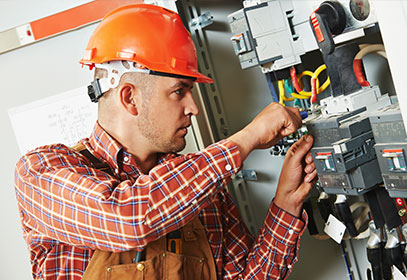To check the safety and well-being of a building and its inhabitants or workers, regular check-ups of the power system are essential. This kind of check-up, commonly referred to as an electrical safety audit, is like going to the doctor for your building. It helps to find potential hazards and confirm that everything is running smoothly and safely. But what exactly is involved in a risk assessment, and why is it so important? In this article, we’ll explore the ins and outs of safety audits and why they are so essential.
Table of Contents
Why Are Electrical Safety Audits Necessary?
These assessments are necessary for a number of reasons. First of all, to find possible problems that could lead to fires or other accidents. For instance, an outdated electrical panel or frayed wires can both be potential fire threats. By identifying these problems early on, they can be solved before a serious incident happens.
A power system’s adherence to safety standards is an additional bonus of electrical safety inspection. Due to the often restrictions that apply to commercial and public buildings, this is extra important. Fines, penalties, and even legal action may be imposed for breaking these rules.
Finally, regular hazard evaluations can help to validate that a building’s electrical system is functioning at optimal efficiency. By identifying issues early on, it can prevent costly repairs and replacements in the future, as well as significantly extend the life of the power system.
How Do You Conduct an Electrical Safety Audit?
The comprehensive response: electrical safety inspection is a multi-stage process that includes an in-depth examination of the power system. The first thing that needs to be done is to determine the general state of the wiring, breakers, cable tray and panels, as well as any additional components. Checking for any evidence of damage, wear and tear, or other concerns that could potentially lead to dangers is included in this step.
The next step of the electrical audit is to examine the building’s electrical plans and blueprints. This step is necessary to determine whether or not the system complies with local safety laws. This involves making sure that the system is securely grounded, the circuits are labeled correctly, and all of the equipment is up to date and operating as it should be to meet the requirements.
The final step of the electrical safety inspection will consist of studying the state of the emergency lighting and power systems in the building to confirm that they are in satisfactory working order. This involves making sure that the backup generator, as well as the emergency lights and exit signs, are functioning as they should and that any necessary repairs have been made by generator repair in Naples Florida.
Why Hire a Professional?
An electrical safety audit must be performed by a qualified and experienced professional. The cost of an assessment varies depending on the size and complexity of the building, as well as the number of components that must be inspected.
However, the electrical safety check cost is often a small price to pay for the peace of mind that comes with knowing that your building’s power system is safe and compliant with all standards. Additionally, hiring a professional ensures that the evaluation is conducted correctly and that all possible hazards are identified. A professional electrician will have the knowledge, experience, and equipment to conduct a thorough and accurate assessment, which can save you time and money in the long run.
How Often Should Inspections Be Conducted?
The age of the structure, the type of building, and the function of the facility are some of the factors that can influence how frequently risk assessments are carried out. A busy commercial building, for instance, ought to have its safety and security evaluated more frequently than a residential property. In a similar manner, an older structure may be required to undergo inspections on a more regular basis than a more recent building. It is normally suggested to carry out an electrical safety auditing at least once per year, although specific buildings may require inspections to be carried out more frequently. For instance, a high-rise building with a large number of occupants would require more frequent assessments than a single-family home.
Regular safety inspections are a vital step in safeguarding the health and safety of a building’s occupants as well as the overall integrity of the structure. They help to check that the power system is operating at its highest possible efficiency, identify any probable dangers, and assure adherence to all applicable safety laws.
It’s important to conduct regular assessments and hire a reputable company to perform the evaluation. By doing so, you can have peace of mind knowing that your building’s power system is safe and in good working condition. It’s always better to be safe than sorry, and an electrical safety check can give you the assurance you need to keep your building and its inhabitants or workers safe.
















